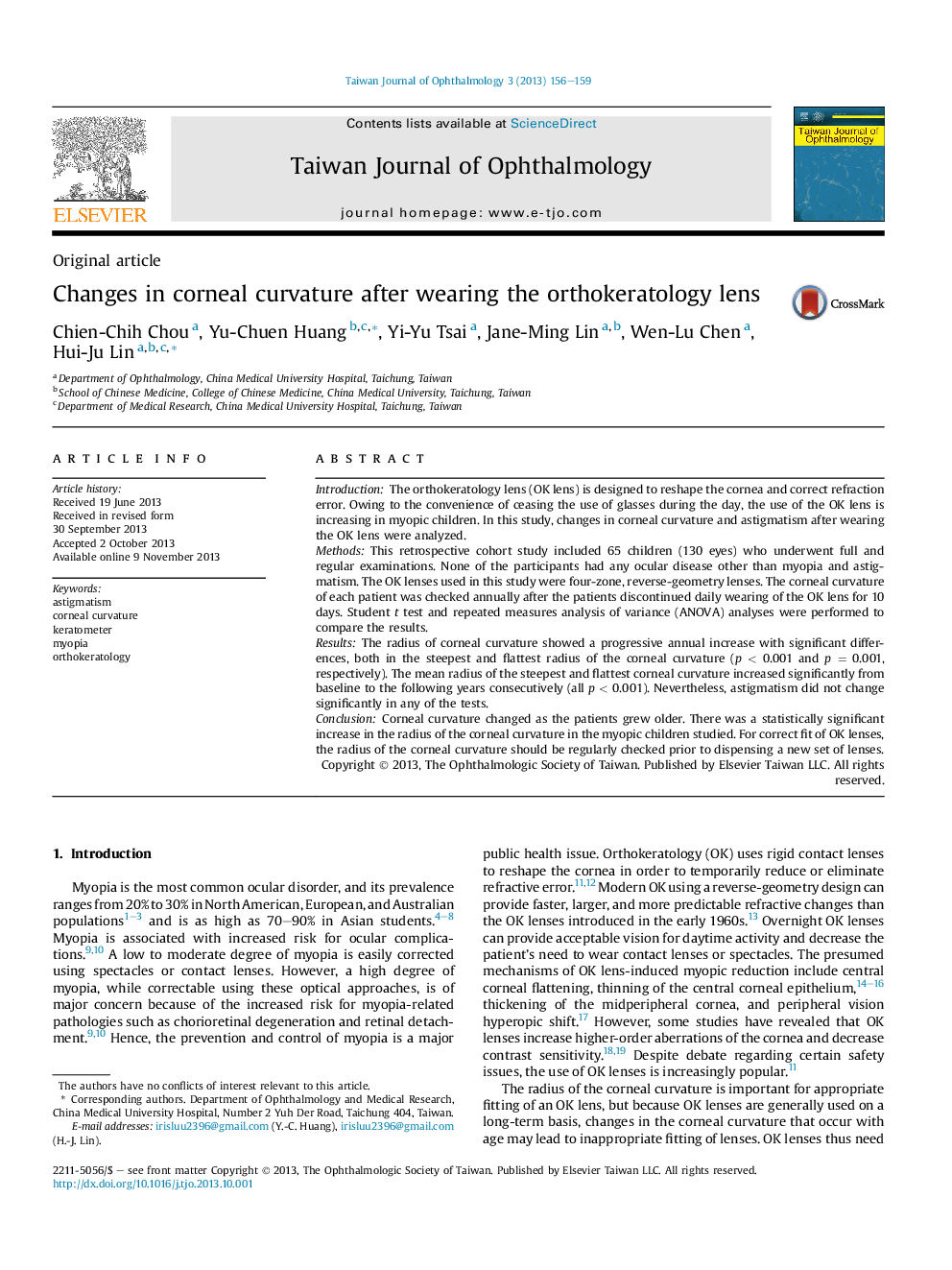| Article ID | Journal | Published Year | Pages | File Type |
|---|---|---|---|---|
| 4033386 | Taiwan Journal of Ophthalmology | 2013 | 4 Pages |
IntroductionThe orthokeratology lens (OK lens) is designed to reshape the cornea and correct refraction error. Owing to the convenience of ceasing the use of glasses during the day, the use of the OK lens is increasing in myopic children. In this study, changes in corneal curvature and astigmatism after wearing the OK lens were analyzed.MethodsThis retrospective cohort study included 65 children (130 eyes) who underwent full and regular examinations. None of the participants had any ocular disease other than myopia and astigmatism. The OK lenses used in this study were four-zone, reverse-geometry lenses. The corneal curvature of each patient was checked annually after the patients discontinued daily wearing of the OK lens for 10 days. Student t test and repeated measures analysis of variance (ANOVA) analyses were performed to compare the results.ResultsThe radius of corneal curvature showed a progressive annual increase with significant differences, both in the steepest and flattest radius of the corneal curvature (p < 0.001 and p = 0.001, respectively). The mean radius of the steepest and flattest corneal curvature increased significantly from baseline to the following years consecutively (all p < 0.001). Nevertheless, astigmatism did not change significantly in any of the tests.ConclusionCorneal curvature changed as the patients grew older. There was a statistically significant increase in the radius of the corneal curvature in the myopic children studied. For correct fit of OK lenses, the radius of the corneal curvature should be regularly checked prior to dispensing a new set of lenses.
